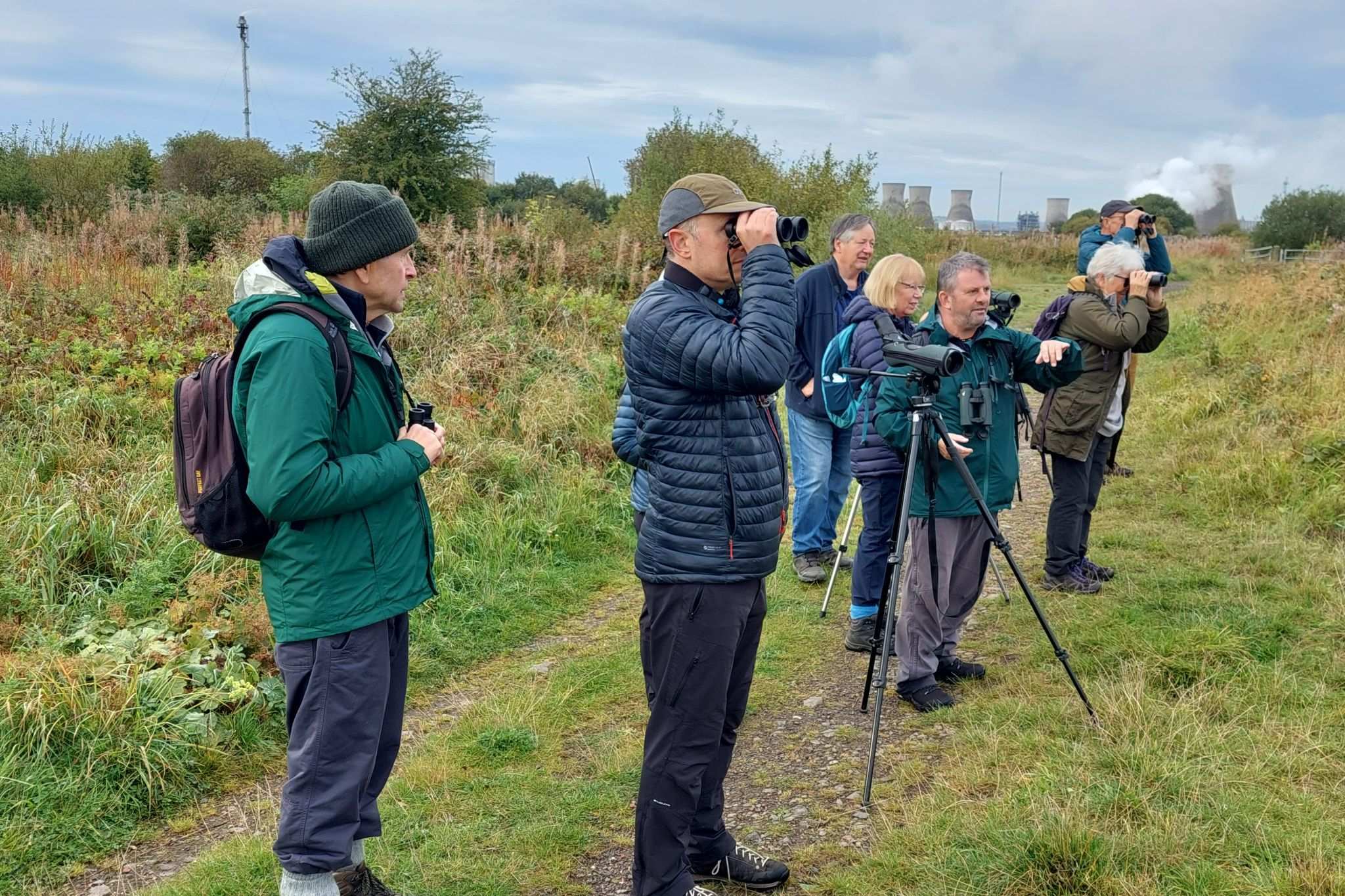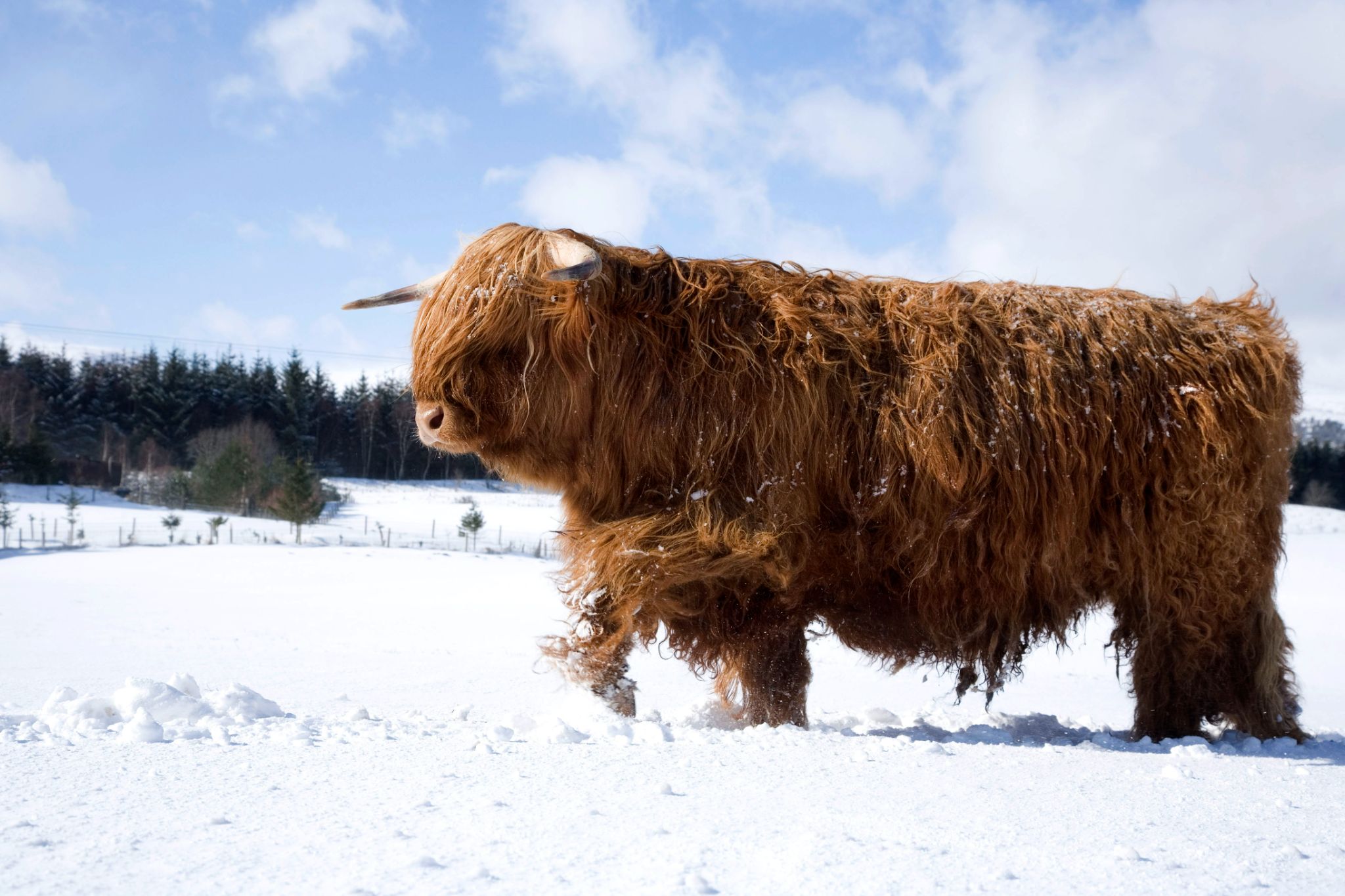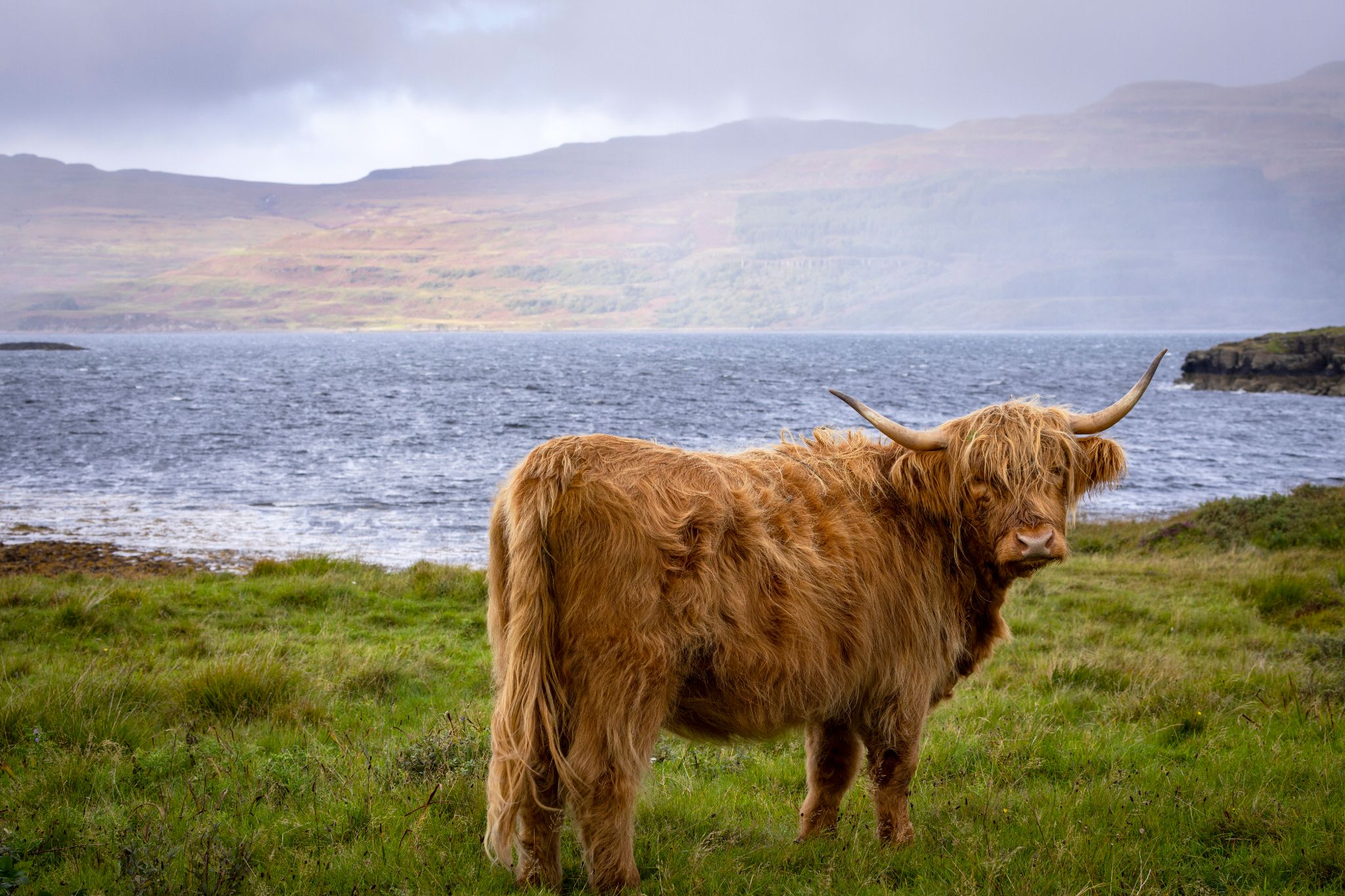
Golden Eagle in flight
1. Where are the best places for wildlife in Scotland?
Speyside is an outstanding area with several species not found elsewhere in the UK, including crested tit and capercaillie. Look out for ptarmigan, dotterel, breeding snow buntings, pine marten, red squirrel and lots more.
Mull is very special with good populations of both golden and white-tailed eagles, otters, hen harrier, short-eared owls and other raptors. Shetland is also high on the list with orcas now sighted regularly and massive seabird colonies including a fabulous European storm petrel colony on Mousa.
The Outer Hebrides have large numbers of raptors plus lots of nesting waders and nesting red-necked phalaropes and corncrakes. Other parts of Scotland can be exceptional in winter for enormous flocks of geese – such as on the Solway and on Islay – and these areas have plenty of other wildlife too.
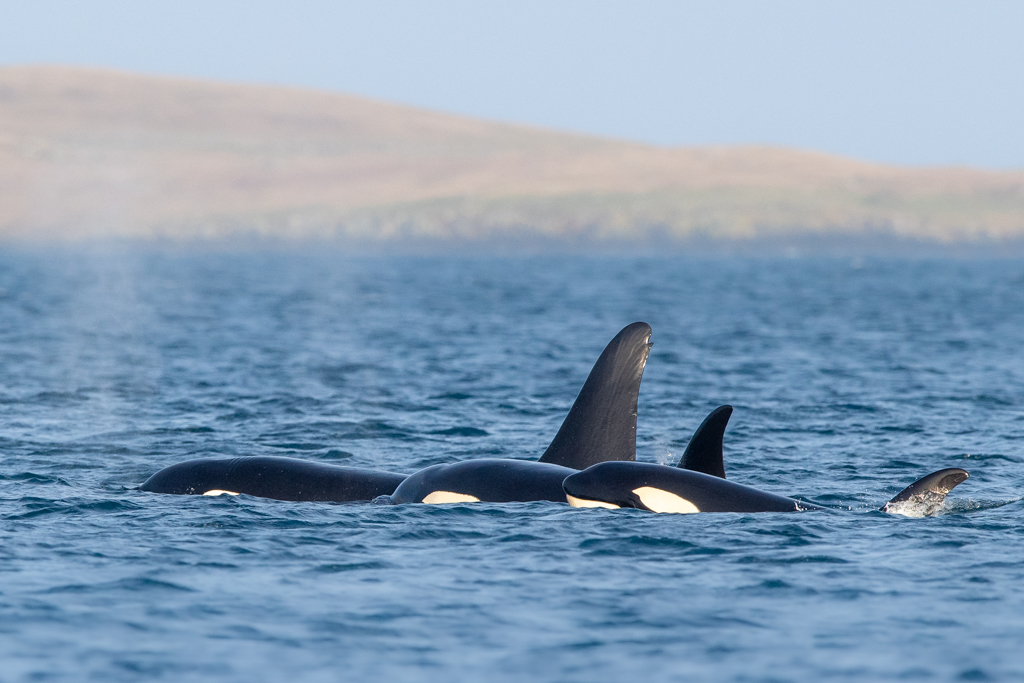
A pod of orcas off the coast of Shetland
© Brydon Thomason
2. What is the rarest animal in Scotland?
It has to be Scottish wildcat with around 400 true individuals. If we include birds, then it would be Scottish crossbill. At present this has a population estimated at around 6,800 pairs.
3. What is the biggest wild animal in Scotland?
Red deer is our largest land mammal. In the seas there have been records of blue whale which is the biggest mammal on earth. This is very rare in the UK however, and they don’t stay in UK waters full-time so might not be considered Scottish. If we consider sea mammals that are in Scottish waters full-time, then it must be minke whale at 10m closely followed by orca at 8m.
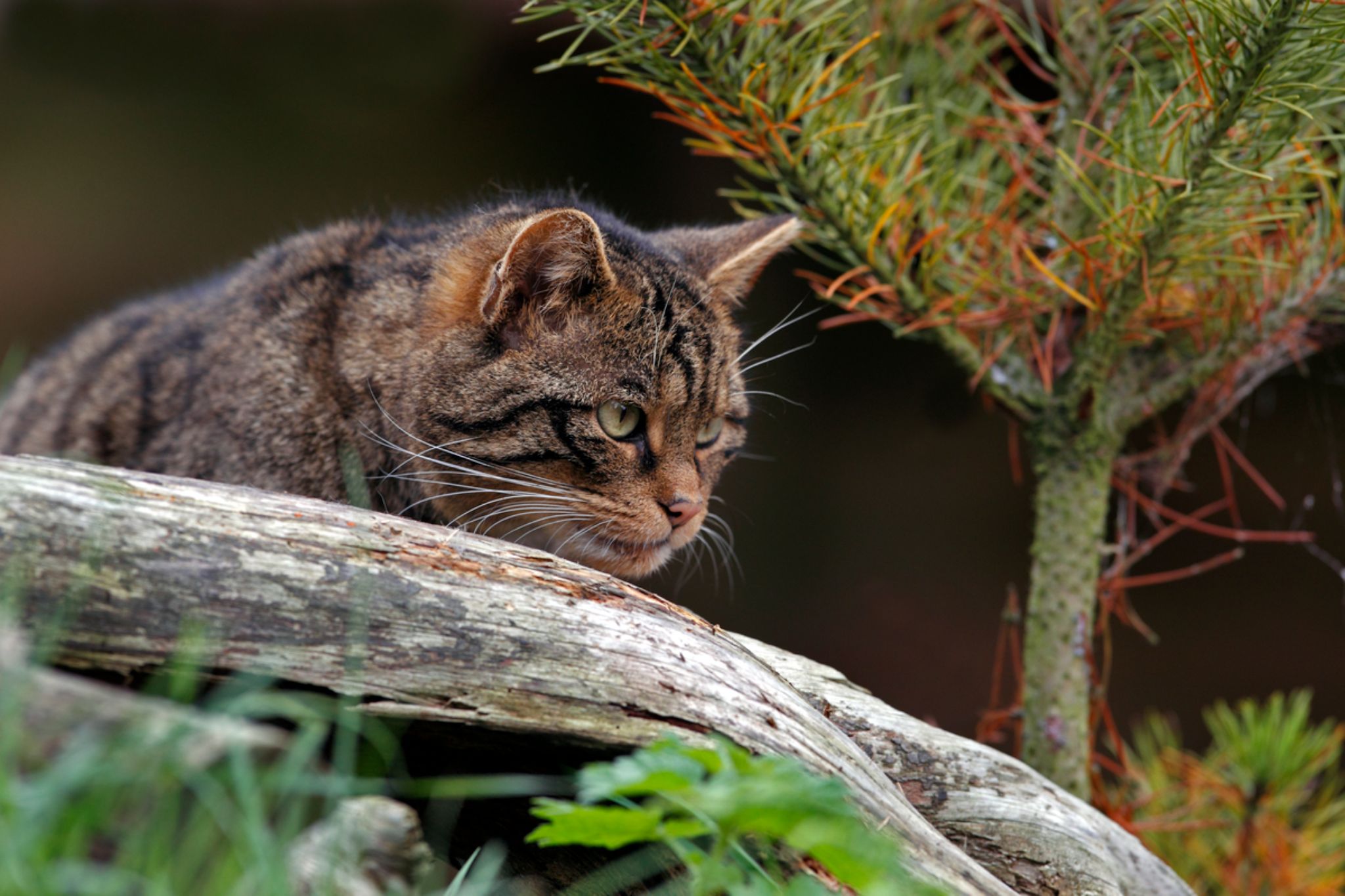
Scottish wildcat
4. What animals can only be found in Scotland?
There are no endemic mammals but there is one bird found only in Scotland - the Scottish crossbill. There are a few subspecies (such as Scottish wildcat, St Kilda wren) but if you go down that road it soon gets very complicated.
There are two flowering plants - Scottish primrose and Shetland mouse-ear and one grass - Scottish small-reed - all unique to Scotland.
5. What are the threats to Scottish wildlife?
There are five major threats to Scottish wildlife. These include climate change, overexploitation of species and natural resources, habitat loss, the impact of invasive non-native species and pollution. Reversing the loss of our nature can help us counteract these effects and adapt to the impacts of climate change we are already facing.
Photography and filming at Fraserburgh Beach
© Discover Fraserburgh / Damian Shields
6. What is the advice for taking photos/ drone shots of animals?
Recreational photography is a great way of engaging with nature. However, you should keep your distance and follow The Nature Photographers’ Code of Practice | PDF 0.8MB. The key thing to remember when photographing wildlife is that you must not disturb any wild animal or put it at risk.
Disturbance by drones can seriously impact on wildlife and other visitors’ quiet enjoyment of the countryside. If flying a drone, you must comply with the Civil Aviation Authority’s guidance, including the Drone Code. Take extra care to avoid disturbing wildlife, which may be an offence. If in doubt, ask the site manager. If visiting one of Scotland’s National Nature Reserves managed by NatureScot, email nnr@nature.scot.
7. How can I get involved in volunteering or conservation work?
Volunteering in the outdoors is a great way to make friends, have new experiences and make a positive contribution to nature conservation. It is also beneficial for your health and wellbeing.
There are different ways you can do this, from volunteering in your local community garden or litter-picking group, to carrying out citizen science such as bird counting, or taking up a volunteering post at a nature reserve. Feel free to get in touch with NatureScot for more information and for the top 10 ways to help nature each season visit:
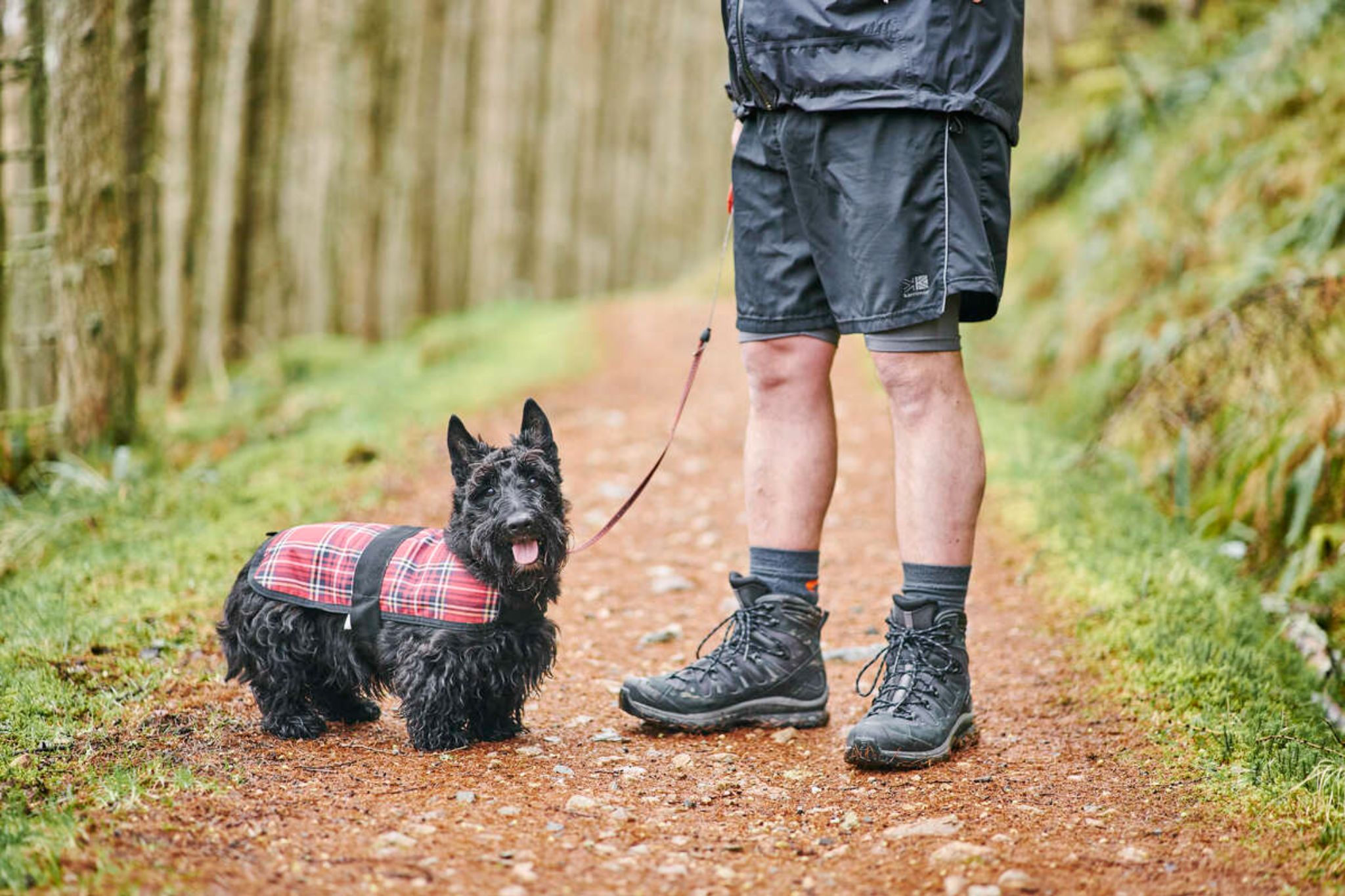
A Scottish terrier being walked along a countryside path
© Forestry and Land Scotland
8. What wildlife projects are underway or planned in Scotland?
Great wildlife projects are happening throughout Scotland, with many funded through the Nature Restoration Fund operated by NatureScot. There are various initiatives from restoring floodplains for Freshwater Pearl Mussels to hedgerow habitat management. Species on the Edge, Saving Scotland’s Red Squirrels, and the South of Scotland Golden Eagle Project are all projects currently underway, and you can find out more about them on the NatureScot website.
9. How does Scottish wildlife compare to other countries?
Scotland is a magnet for bird and marine life; we are on a key migration route for many species, so the diversity of wildlife can change dramatically from season to season, in addition to our resident terrestrial species.
Unfortunately, the impact of people (past and present) is everywhere. As a result, we are lacking some very important keystone species. This means that unlike some European countries we do not have some of the large mammals and natural predators or vast ancient woodlands.
Scotland could support more of these species in the future. Efforts in species reintroductions, land restoration and policy changes have started making an impact. There are many sites where you can witness these initiatives in action and it is vital that we continue these efforts to better support more wildlife.
Red deer stag
© Neil McIntyre
10. How much do our landscapes support wildlife?
Scotland offers an array of truly breathtaking landscapes with many beautiful features all in close proximity. The variety of Scottish landscapes and their closeness to one another is important. You are never far from the spectacular coastline or from a beautiful loch, or tumbling burn, so aquatic life is a key part of Scotland’s wildlife.
Rising from the sea are windswept cliffs, dunes and grasslands. There are narrow glens and wide plains. The hills and mountains rise out of these landscapes. This diversity of landscapes provides a wealth of opportunities for all sorts of species, especially birds that will utilise all these different niches.
Micro-climates also play a big part in the distribution of the wildlife, with steep sunny slopes, windy crags, wet meadows, frost pockets, humid gullies and temperate rainforests. Our flora and insects are especially diverse and special as a result.
11. What is the unique wildlife of the Scottish Highlands?
A day out in Scotland offers the opportunity to see so much different wildlife. We can be out on the hill spotting red deer, golden eagle, white-tailed eagle, large heath butterflies and emperor moths and look down to the sea to see otters, dolphins, porpoises and, if we’re lucky, whales or basking sharks.
The woodlands, especially the Atlantic rainforests, are rich with rare mosses, ferns and lichens. The conifer forests are home to red squirrels and pine martens. Our internationally important peatlands are rich with asphodels, bog mosses, sundews and cotton-grass. The mountain tops boast Arctic and alpine plants, whilst the sandy, windswept coastal grasslands are some of the most floristically rich habitats in the UK.
Thank you to our wildlife experts
1-4: Cath Wright, Board Chair, Wild Scotland
5-8: Dougie Pollok, Biodiversity Engagement and Learning Manager, NatureScot
9-11: Steve Wheatley, Reserves Manager – North Area, Scottish Wildlife Trust
